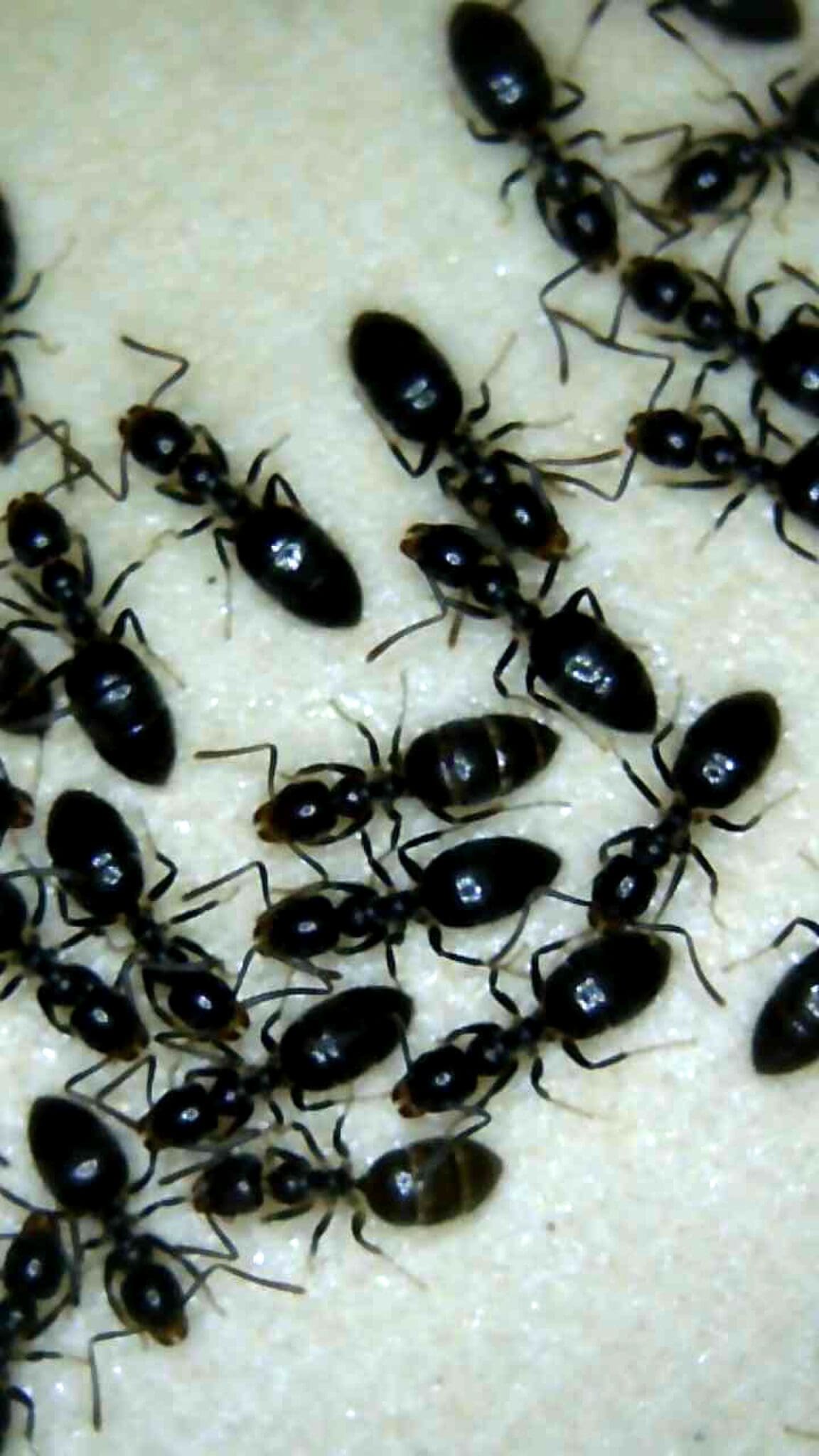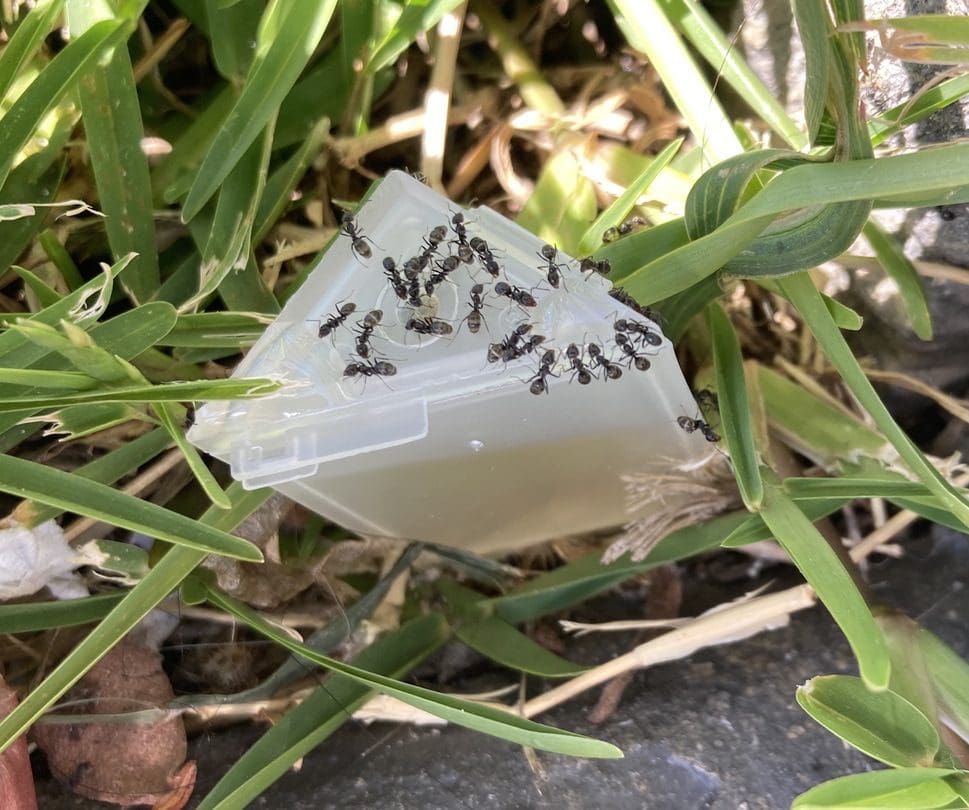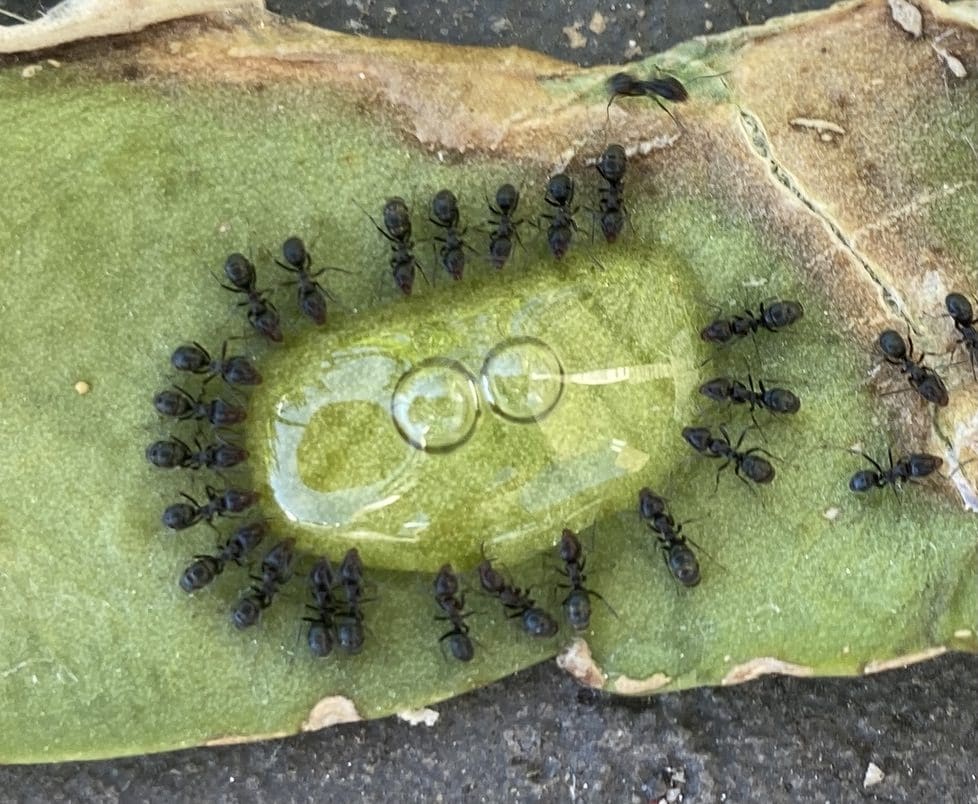Ants
Optimal results. Minimal pesticide use. Minimal impact to the environment.
Ants
Of the few thousand ant species that exist in Australia, only a few are considered pests. The small Black House ants and Coastal Brown ants that develop large colonies in and around houses are often of the most concern.
Ants live in permanent nests which may be in the soil, in timber, under pavers, in wall cavities or roof voids. They may travel considerable distances for food – if it can possibly be considered food, there will be a species of ant that will want to take it back to its nest.
Severe infestations can nest around power points which offer easy and direct access to a nest inside the wall cavity.
Ant activity often increases during periods of high humidity and often new nests are established in areas where ants may not have been noticed before. Some believe that you can predict the weather by ant activity, that ants are more active just before rain. If you happen to notice ants carrying small white objects that look like grains of rice, these are their eggs, and they may be relocating the nest before a heavy rain.
In the warmer weather, you might see swarms of flying ants, leaving the nest to set up a new home. But beware, they may not actually be ants at all!
Ant treatments vary according to the species and may include the judicial placement of specific ant baits, the use of pesticide sprays along trails, and/or application of dusts in crevices and weep holes.
If the ant population is getting too big to control yourself, it’s time to call in the professionals. Contact us today for a free quote or consider a Multi Pest Service.
If you are having issues with more than one pest then maybe our Multi Pest Treatment will suit you. This treatment controls Cockroaches, Spiders and Ants in the one simple application.
Apart from the typical Black ants seen in various images on this page there are many hundreds of species that may cause issues for homeowners from time to time but only three other main types of ant make trouble dependant upon the situation.
- Coastal Brown Ants
- Meat Ants
- Funnel Ants
You can help to reduce ant infestations by:
Cleaning up food spills immediately
Removing unconsumed pet food
Changing pet feeding areas regularly
Sealing gaps, cracks and crevices
Reducing foliage on or against structures
Treating plants for sap sucking insects like aphids that live symbiotically with ants
Having preventative pest control carried out regularly
Cleaning gutters of debris and moisture
Making sure ther are no water leaks





